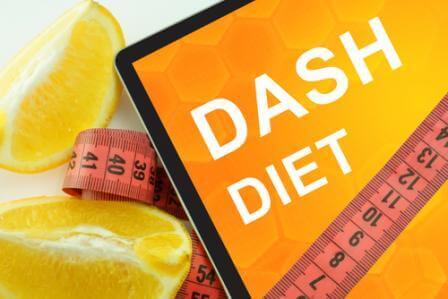The DASH Diet Gets an Upgrade
There’s no doubt that the original DASH diet was effective for reducing blood pressure and weight loss. But a tastier version may work just as well.
The DASH diet was ranked #1 for Best Overall Diet this month by the US News and World Report, who release an annual report on the most popular diets. This diet was developed back in the early 90s as a dietary approach to stop hypertension. (In fact, that’s what DASH stands for.) It’s been proven effective as a way to reduce blood pressure and lower cholesterol. And, according to the experts to rated the diets for US News and World Report, the DASH diet isn’t just good for your heart; it’s a very healthy way to eat overall.
What Do You Eat On the DASH Diet?
Compared to the typical American diet, the DASH diet contains more fruits and vegetables whole grains, and low-fat dairy products. Poultry and fish are the preferred sources of animal proteins. Red meat, salt, sweets, and sweetened beverages are limited. Not surprisingly, people following the DASH diet have higher intakes of fiber, potassium, magnesium, and calcium and lower intake of total fat, saturated fat, and sodium.
The question isn’t whether the DASH diet works: It clearly does. The question is whether other approaches might work just as well (or even better) to prevent high blood pressure and heart disease. Because the DASH diet only works to the extent that you stick to it. Although the DASH diet works like gang-busters in a study setting, where people’s food intake is strictly controlled, it doesn’t fare quite as well in the real world. Left to their own devices, most people tend to find a steady diet of skinless chicken breasts and skim milk a little tiresome.
The good news is that less austere versions of the DASH diet seem to be just as effective.
The DASH Diet Only Better
A few years after the original DASH studies, researchers found that they could get even better results by replacing some of the carbohydrates in the DASH diet with more protein. Specifically, the participants in the Omni-heart trialopens PDF file ate less fruit, grains, and desserts, and more eggs, fish, and poultry.
More recently, the BOLD study suggested that it may not be necessary to avoid red meat. Participants who followed the DASH recommendations on fruits, vegetables, whole grains and low-fat dairy but who ate mostly lean beef instead of chicken or fish, had similar improvements in their blood pressure and cholesterol.
See also: Eating Red Meat Causes Cancer? Not Exactly
And just last month, researchers published results showing that those who followed a DASH-like diet but replaced low-fat dairy products with full-fat dairy products did just as well as those who stuck to the low-fat dairy.
Choose Your Healthy
If being able to enjoy some cheese or the occasional filet makes it easier for you to follow through on the other aspects of these healthy eating programs, that’s a win!
It just goes to show that there are a lot of ways to put together a healthy diet—and it’s important to find one that you can stick with long-term. If being able to enjoy some cheese or the occasional filet makes it easier for you to follow through on the other aspects of these healthy eating programs, that’s a win!
Research shows that diets that are somewhat higher in protein tend to be more satiating and those that are higher in fat are often more palatable. Both bode well for long-term adherence.
Despite the differences between these approaches, there are a few things that all of these heart-healthy diets have in common.
1. You still have to eat your vegetables. High intake of vegetables—at least five servings a day—is a key factor in all of these diets, even more so than fruit.
See also: How to Get More Vegetables into Your Diet
2. If you increase one thing, you have to reduce another. This may seem obvious but things often go awry here. People are eager to hear what they can eat more of and somehow miss the little detail about having to eat less of something else. In fact, as researchers increased the amount of fat and protein in the test diets by adding more meat, nuts, eggs, and dairy, they compensated for some of those extra calories by reducing the amount of fruits, grains, and added sugars.
3. You still have to limit sugar. Although there’s some flexibility with how much and what kinds of fat and protein you can eat, reducing your intake of sweets and sweetened beverages appears to be non-negotiable. All of these diets are built on whole and minimally processed foods. There’s just not a lot of room in any healthy diet for those empty calories.
See also: How to Reduce Your Added Sugar Intake







